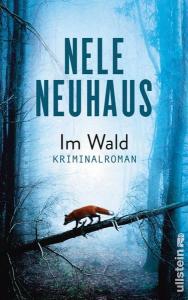
Ein einziger Tag, ein ganzes Leben. Mit einem Unglück startet Aaliya in diesen Morgen: ihre Haare sind blau, viel blauer als sie sein sollten. Aber warum sich aufregen, mit 72 Jahren spielt das auch keine Rolle mehr. Noch dazu lebt sie allein in ihrer kleinen Beiruter Wohnung; zu den anderen Bewohnern des Hauses hatte sie nie viel Kontakt, man kennt sich, weiß das Nötigste und fertig. Lieber hat sich Aaliya mit Büchern umgeben, in der Buchhandlung, in der sie viele Jahrzehnte gearbeitet hat, oder zu Hause, wo sie in den letzten 50 Jahren jährlich ein Werk der Weltliteratur übersetzt hat. Das neue Jahr steht an, eine Entscheidung für ein neues Buch muss getroffen werden. Wie viel Zeit bleibt ihr noch, kann sie sich an einen dicken Wälzer wagen? Immer wieder wird diese Überlegung unterbrochen, durch ein Klopfen an ihrer Tür, durch eine Erinnerung an die Vergangenheit, an die Geschichte ihrer geliebten Heimat und an Hannah, ihre einzige Freundin. Die blauen Haare waren nur der Anfang, das Schicksal hat noch mehr große Erschütterungen für Aaliya an diesem Tag vorgesehen.
Rabih Alameddine entführt seine Leser einmal mehr in den von ihm so sehr geliebten Nahen Osten, in den Libanon, seine Heimat. Das Schicksal dieser Stadt, das ihn offenbar schwer getroffen und beeindruckt hat, findet sich auch in diesem Roman wieder. Aaliyas Leben ist eng verbunden mit den Geschehnissen der Metropole zwischen Mittelmeer und Gebirge, die in der zweiten Hälfte des 20. Jahrhunderts von zahlreichen Kriegen gezeichnet, immer wieder zerstört und wieder aufgebaut wurde und es schafft, unterschiedlichste Konfessionen und Lebensweisen zu beheimaten.
Das Leben Aaliyas verläuft nicht nach Plan, jung verheiratet wird sie doch nie zur echten Ehefrau und Mutter, als Geschiedene lehnt sie eine weitere Hochzeit ab und bleibt so allein, wenn auch nicht einsam, denn die Literatur begleitet sie. Für jede Lebenslage findet sie Trost bei einem Dichter, alles lässt sich erklären, denn es wurde bereits niedergeschrieben; auch die Philosophen und Maler, ebenso die klassischen Musiker haben es ihr angetan und ihr ferne Länder eröffnet. Aaliya macht einen zufriedenen Eindruck und scheint mit sich und der Welt im Reinen zu sein, nach all den Jahren, in denen sie auf sich allein gestellt war und auch schon einmal mit der Kalaschnikow im Bett schlafen musste. Und dennoch tut sich ein Riss auf. Dies wird an einer Stelle besonders offenkundig:
Henri Matisse hat einst gesagt: „Es hat mich mein ganzes Leben lang beschäftigt, dass ich nicht male wie jeder andere.“ Ich liebe dieses Zitat, liebe die Tatsache, dass der strahlendste Maler des 20. Jahrhunderts so gedacht hat.
Nein, sie ist keine typische Frau ihrer Zeit. Sie ist eigensinnig und durchsetzungsstark, beweist Rückgrat und Bildung. Als Autodidaktin wurde sie zur Übersetzerin, eine Arbeit für ein nicht vorhandenes Publikum. Aber sie sagt selbst, dass nicht das Ergebnis zählt, sondern der Weg dahin. Vielleicht ist das das Geheimnis ihres Lebens: nicht was sie am Ende erreicht hat, sondern die Zufriedenheit und Freude auf dem Weg dahin ist das, was wirklich zählt.
Rabih Alameddine zeichnet eine Figur, die nicht auffällt und doch heraussticht. Eine starke Frauengestalt, die sich in einer patriarchalischen Gesellschaft ihren Weg bahnt und eigene Maßstäbe zu setzen weiß. Dabei wirkt sich ein wenig schrullig, aber immer liebenswert. Und wer große Literatur liebt, muss unweigerlich auch Aaliya lieben.








